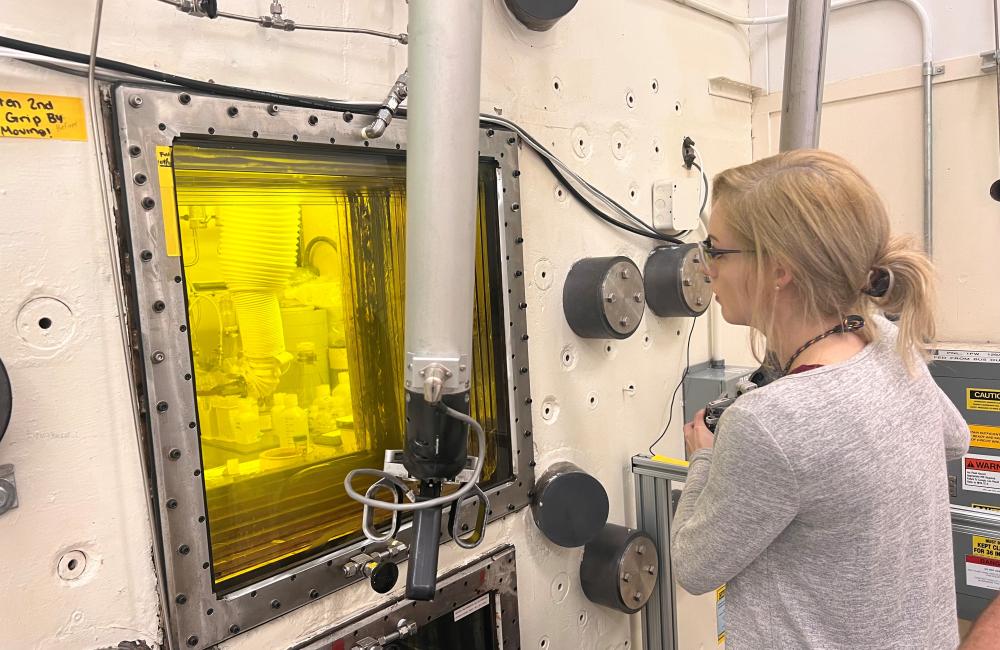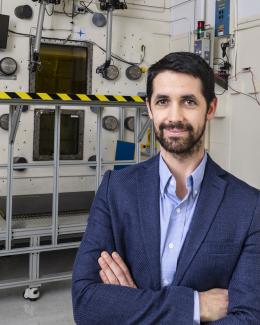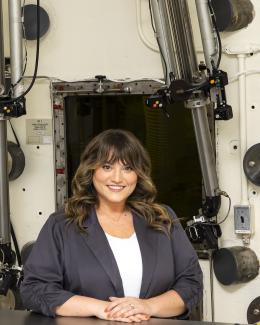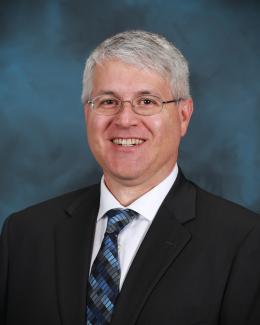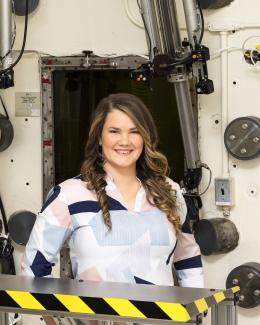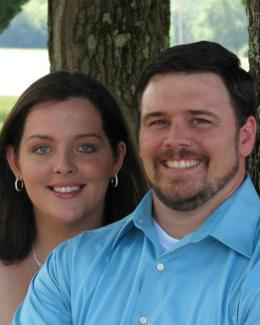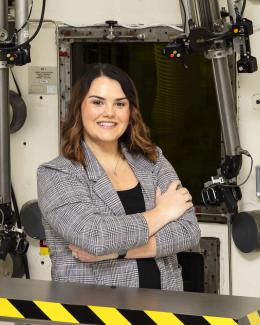Seeing the difference Ac-225 could make to cancer patients made Raina Setzer want to come to ORNL to directly work with the isotope. Credit: Allison Peacock/ORNL, U.S. Dept. of Energy
Raina Setzer knows the work she does matters.
That’s because she’s already seen it from the other side.
Setzer, a radiochemical processing technician in Oak Ridge National Laboratory’s Isotope Processing and Manufacturing Division, joined the lab in June 2023. Here, she’s involved with actinium-225 produced by the Tri-Lab collaboration involving ORNL, Brookhaven National Laboratory and Los Alamos National Laboratory.
But before coming to ORNL, Setzer worked as a radiochemist at Washington University School of Medicine in St. Louis, at the Mallinckrodt Institute of Radiology. Among her tasks working in a nuclear pharmacy was synthesizing and labeling the radiopharmaceutical Ac-225 DOTA-TATE — which contained Ac-225 that came from ORNL.
Setzer saw the medicine used for patients with advanced, fast-progressing disease that was resistant to other treatments. In some cases, she said, "only a few doses put patients in remission.
“It was very powerful,” she said. “I really got to see the wonderful impact, downstream, the medical isotopes from here can make.”
And it spurred a desire for a new career goal: to come to ORNL — one of the only producers of Ac-225 in the world — and work with Ac-225 herself.
“I wanted to make a difference,” Setzer said.
Setzer already wanted to work in nuclear medicine, and she became particularly interested in those used for targeted alpha therapy cancer treatments.
“Actinium is very scarce,” she said. “Knowing how little of it we have to treat people, I definitely wanted to be part of the team here that’s making more of it.”
Currently, she’s happy to be involved with the Tri-Lab team, which is looking at alternative ways to produce Ac-225 for nuclear medicine.
ORNL produces the majority of the world’s Ac-225 by harvesting it from a supply of thorium-229, nicknamed a “cow,” that slowly decays to Ac-225. But the amount of Ac-225 currently “milked” from the thorium-229 “cow”— about 1 curie annually — is not enough even for large-scale clinical trials, let alone widespread use for treating cancers. Increasing the amount of Ac-225 derived from the thorium cow is so difficult that it’s not a viable option for scaling up production.
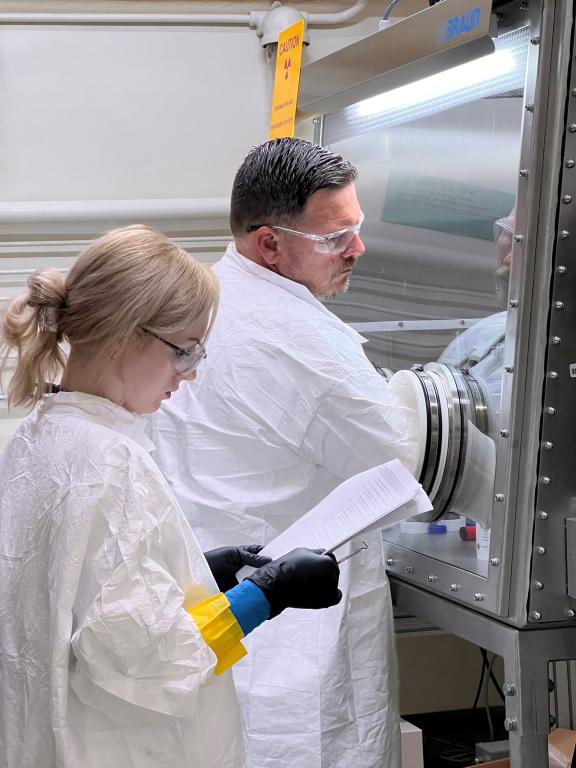
Accelerator-produced Ac-225 could produce larger batches more frequently. principal investigator Andrew Burgoyne, group leader Allison Peacock and co-workers David Denton, Emily Wilen, Lance Wyant, Kari Goldstein and Jordan Belvin welcomed her to the team.
“I am fortunate every day to work together with people on the same mission,” she said.
Recently, the team reviewed and overhauled its quality management system to update current Good Manufacturing Practice procedures. This initiative greatly improved compliance and resulted in more efficient processes, ultimately contributing to the group’s success in ensuring on-time shipment to customers while meeting the stringent quality specifications.
In addition, they met a milestone: submitting the first amendment to the Drug Master File. Maintaining an accurate DMF ensures the accelerator-produced Ac-225, which varies slightly from the Ac-225 produced from the cow and so needs its own file, also can be used for treatments.
In her previous work in oncology pharmacy, Setzer said, “seeing people so sick was very hard.” But seeing the efficacy of treatment with radionuclides was encouraging. Now, she said, as she performs her role, the idea of being able to save a life, decrease symptoms or improve quality of life is always in the back of her mind. And because the isotopes needed to make the treatment have such a short period of stability, minutes matter, she added.
“All the people here working hard to get all our Ac-225 shipped on time make such a massive difference in people’s lives,” she said. “Every second counts, for every single person doing every part of it. It all matters. It’s all very important.”
UT-Battelle manages ORNL for the Department of Energy’s Office of Science, the single largest supporter of basic research in the physical sciences in the United States. The Office of Science is working to address some of the most pressing challenges of our time. For more information, please visit energy.gov/science.


